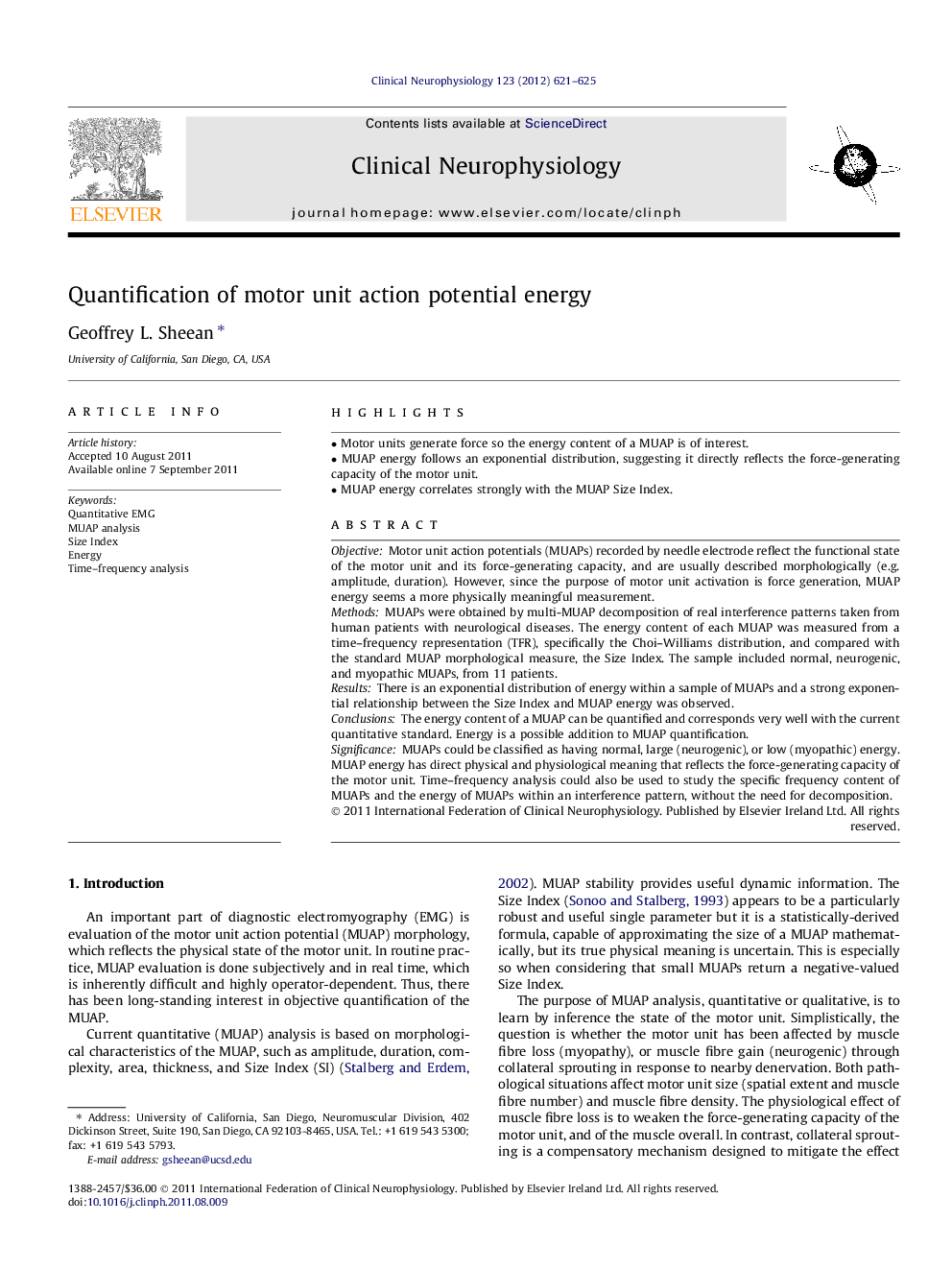| Article ID | Journal | Published Year | Pages | File Type |
|---|---|---|---|---|
| 3045452 | Clinical Neurophysiology | 2012 | 5 Pages |
ObjectiveMotor unit action potentials (MUAPs) recorded by needle electrode reflect the functional state of the motor unit and its force-generating capacity, and are usually described morphologically (e.g. amplitude, duration). However, since the purpose of motor unit activation is force generation, MUAP energy seems a more physically meaningful measurement.MethodsMUAPs were obtained by multi-MUAP decomposition of real interference patterns taken from human patients with neurological diseases. The energy content of each MUAP was measured from a time–frequency representation (TFR), specifically the Choi–Williams distribution, and compared with the standard MUAP morphological measure, the Size Index. The sample included normal, neurogenic, and myopathic MUAPs, from 11 patients.ResultsThere is an exponential distribution of energy within a sample of MUAPs and a strong exponential relationship between the Size Index and MUAP energy was observed.ConclusionsThe energy content of a MUAP can be quantified and corresponds very well with the current quantitative standard. Energy is a possible addition to MUAP quantification.SignificanceMUAPs could be classified as having normal, large (neurogenic), or low (myopathic) energy. MUAP energy has direct physical and physiological meaning that reflects the force-generating capacity of the motor unit. Time–frequency analysis could also be used to study the specific frequency content of MUAPs and the energy of MUAPs within an interference pattern, without the need for decomposition.
► Motor units generate force so the energy content of a MUAP is of interest. ► MUAP energy follows an exponential distribution, suggesting it directly reflects the force-generating capacity of the motor unit. ► MUAP energy correlates strongly with the MUAP Size Index.
